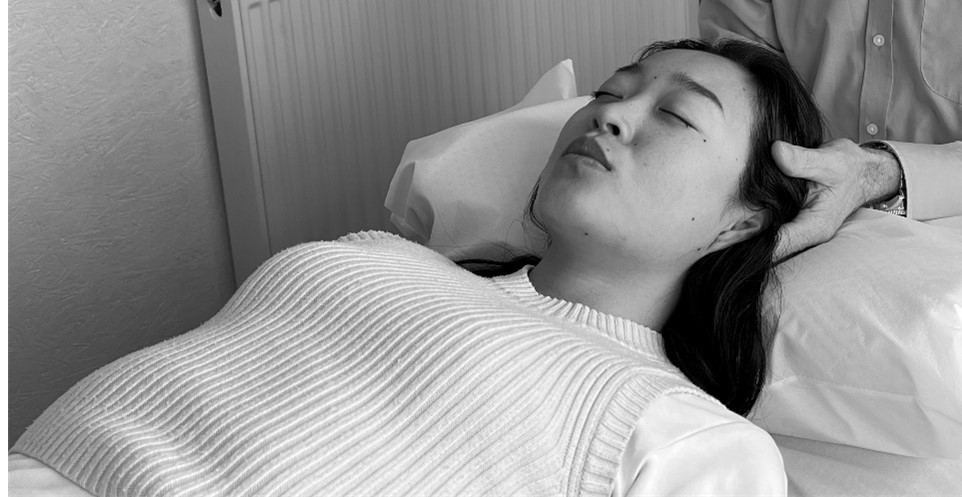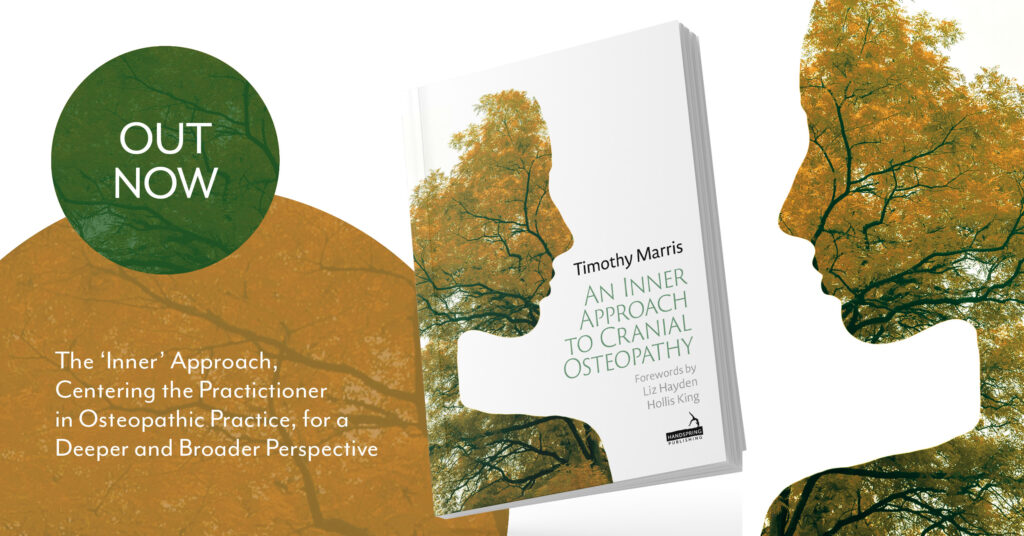Written by Tim Marris, author of An Inner Approach to Cranial Osteopathy (August 2023), published by Handspring Publishing.
During the last 40+ years of my career, I have always wondered: What is the scope of osteopathy?
Whilst a student at The British School of Osteopathy in the 1970’s I was taught much about the musculoskeletal system and its physiology. This was furthered by supervised clinic tuition. Then I was sent out into practice life to explore these skills with patients.
However, I always had this strong feeling that something was missing, that osteopathy had much more to offer than was being clinically practiced by most osteopaths at that time. I then went on my first cranial osteopathic course, directed by the late Colin Dove. This and subsequent courses that I attended were significantly eye opening, expanding my vision of the true clinical potential of osteopathy. Then, as frequently happens, the more you know and understand, so the trickier the clinical condition your patients present with. Hence practitioner frustration for more knowledge and skill continues!

As A.T. Still and W.G. Sutherland taught us, osteopathy is the application of our knowledge of applied anatomy of the physiology in a manner that helps the patients physiology to then heal itself. As osteopaths, when we can feel a tissue then we can probably help its physiology to a greater or lesser degree. But what is the limit of what can feel within the physiology?
When palpating we use 3 hands: the left hand, the right hand and most importantly our ‘3rd hand’ that of our consciousness. Unless we palpate inside the mouth, touch the sclera of the eye, or do a pelvic internal technique (all of which require ‘informed consent’ from the patient), we only ever touch skin, hair or clothing. However, personally, I have only a few times chosen to treat the skin, once tried to see if I could help someone’s hair follicles (and failed) and have never treated clothing!
So, in reality, we feel and treat where we send our attention, not where we have our hands. We have all been doing this since our initial week of osteopathic college, but maybe not realised that this is what we do. We just feel the intervertebral disc, joint ligaments or synovial membrane, organs etc. etc., whatever we decide to feel. When I realised that we don’t feel with our hands, although our hands do subtly modify their contact as we change where to send our consciousness, I realised that we could send our consciousness anywhere in the physiology.
We as practitioners often find a patient’s name, someone we have not seen in a while, jumps into our head as if from nowhere. We had not been thinking of their name prior to that moment, as perhaps they last came several months ago or even 10 years ago (or longer). Then later that day or the next day, that exact patient phones to make an appointment. The patient has their awareness on needing an osteopathic appointment, and we as practitioners pick up on that thought vibration with some subtle level of our consciousness. How does this work? I don’t know, but probably on some level of quantum mechanics. However, the number of practitioners I have talked to who say that they have had this experience is well over 80%. Such a percentage is way, way, beyond pure coincidence!
The realisation that it’s our consciousness which is the underlying factor on what we feel within the patient’s physiology, made me desire to explore the anatomy even more profoundly. Attending and then teaching on cranial courses and also courses about the circulation and the capillary bed, intensified that desire to delve even deeper within the physiology. Such courses verified that if we can feel a structure, even as subtle as a blood vessel, we can treat it, and influence its physiology. Such experiences further verified that what we can do as osteopaths was significantly greater than simply being musculoskeletal experts.

I should at this point, emphasise that osteopathic musculoskeletal (MSK) work (of whatever method) is highly valuable to patients with MSK aches and pains and am not intending to undermine it, as many of my patients attend with such symptoms.
However, the underlying thought “what is the true scope of osteopathy” kept niggling away in my head. Could I take it to destinations within the physiology at an even more profound level? I decided to explore the fascia as a starting point for a new physiological journey. Fascias are incredibly important to our osteopathic work, as they transmit forces within the body. Some fascias feel very dry and others more fluid, some toxic and some very healthy.
I commenced by taking my awareness to the interosseous membrane of the forearm, as an area of easy access. Being with the interosseous membrane, I was then able to assess its quality. However, I still wanted to palpate deeper within the fascia. So, I took my consciousness to the fascial extracellular matrix which feels quite fluid and felt its quality. The following step was then to see if I could take my awareness to the cell wall of a cell adjacent to the matrix. Much to my amazement, I became aware of a ‘solid’ which was incredibly delicate, and not the matrix, This had a unique quality that I had never felt before. If this was the cell wall, then if I were to go to the other side of the cell wall, then the intracellular fluid would be different quality to the extracellular fluid. I had to ‘recentre’ myself and get rid of any expectations and possible imagination before I made this next step. I had to have a state of mind of:
“I have no idea what I will feel nor its quality.”
Then I took my awareness inside the cell and to the intracellular fluid. Incredibly, I found myself in a fluid that was of a different quality to that of the matrix. It felt slightly denser inside the cell membrane to outside the cell membrane.
Now for the real question… could I treat it and if so, would it make a palpable difference to the fascial tissue?
I mentally invited the intracellular fluid to “treat itself, if it wanted to”, and just waited, keeping totally centred within myself. Then I gradually felt a quality change occurring. Subsequently, I returned to the gross fascial level, and its quality had definitely improved!
Was I only on one cell? No, I certainly don’t think so. I was probably on the ‘quantum field’ of the cell membrane and cells for that specific fascial tissue, where I had my awareness inside the interosseous membrane.
So, getting back to my initial question, what is the real scope of osteopathy? It may only be limited by our consciousness, our knowledge of anatomy and physiology, and what we choose to do!
Finally… it is extremely important not to make unsustainable promises to patients even if treating at such a subtle level.
Find out more about this exploration in the recently published, An Inner Approach to Cranial Osteopathy.